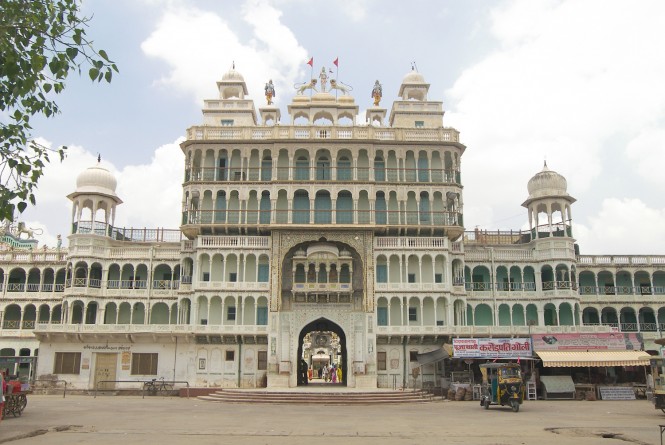
Located 180 km from the city of Jaipur, Jhunjhunu is a historical town in Rajasthan. Jhunjhunu has always been a commercial and trading centre also know to be a part of the Chauhan Dynasty. Jhunjhunu is famous for its religious sites, the Rani Sati Temple being the most popular temple in this town. The city is also home to iconic Rajashani havelis decorated with intricate carvings and frescoes.
Dedicated to Rani Satiji, this 400 years old temple stands as a mark of respect, motherhood and feminine bravery. People from across the country visit the Rani Sati Temple to offer special prayers and attend sacred rituals held during ‘Bhado Amavasya’ (no moon night). Constructed in white marble, the temple has colourful wall paintings and murals. There is a portrait of Rani Satiji, who looks graceful and stands as an example of feminine power and prowess. There are other temples in the same complex as the Rani Satiji Temple, namely, Shiv Temple, Ganesh Temple, Sita Temple and Hanuman Temple.
The Marwaris of Rajasthan strongly believe that Rani Satiji was an avatar of Maa Durga, who symbolizes feminine energy. She took revenge of her husband’s death by killing his murderer and then fulfilled her wish to be a sati (an ancient Indian practice where the widow was burnt with her husband’s corpse). Though there have been many protests against sati temples across India for their association with Sati Pratha, Rani Satiji Temple is one among the wealthiest temples in India.
In today’s world, when despite the power of independence, the right to live and fight for justice, most women are still weak and helpless. There are cases each day when women (and sadly, even baby girls) are molested and shamelessly treated. This temple strongly conveys a message of feminine power and the strength with which a woman can fight and protect herself.
For more related information, you may refer to the following:





